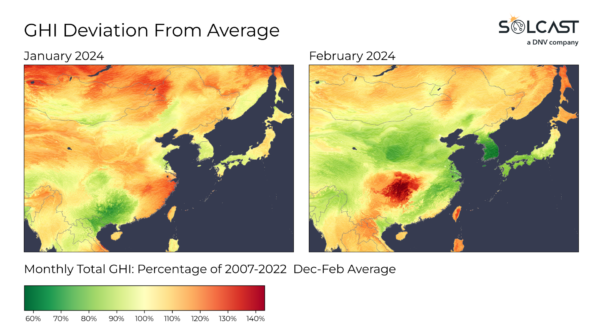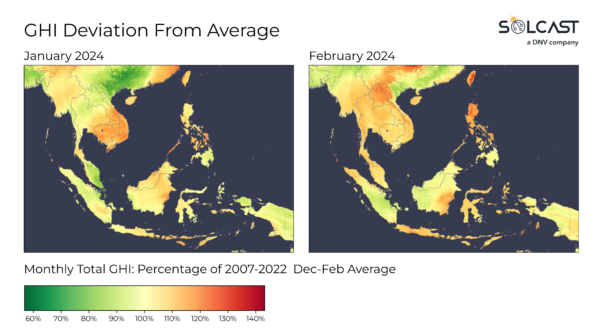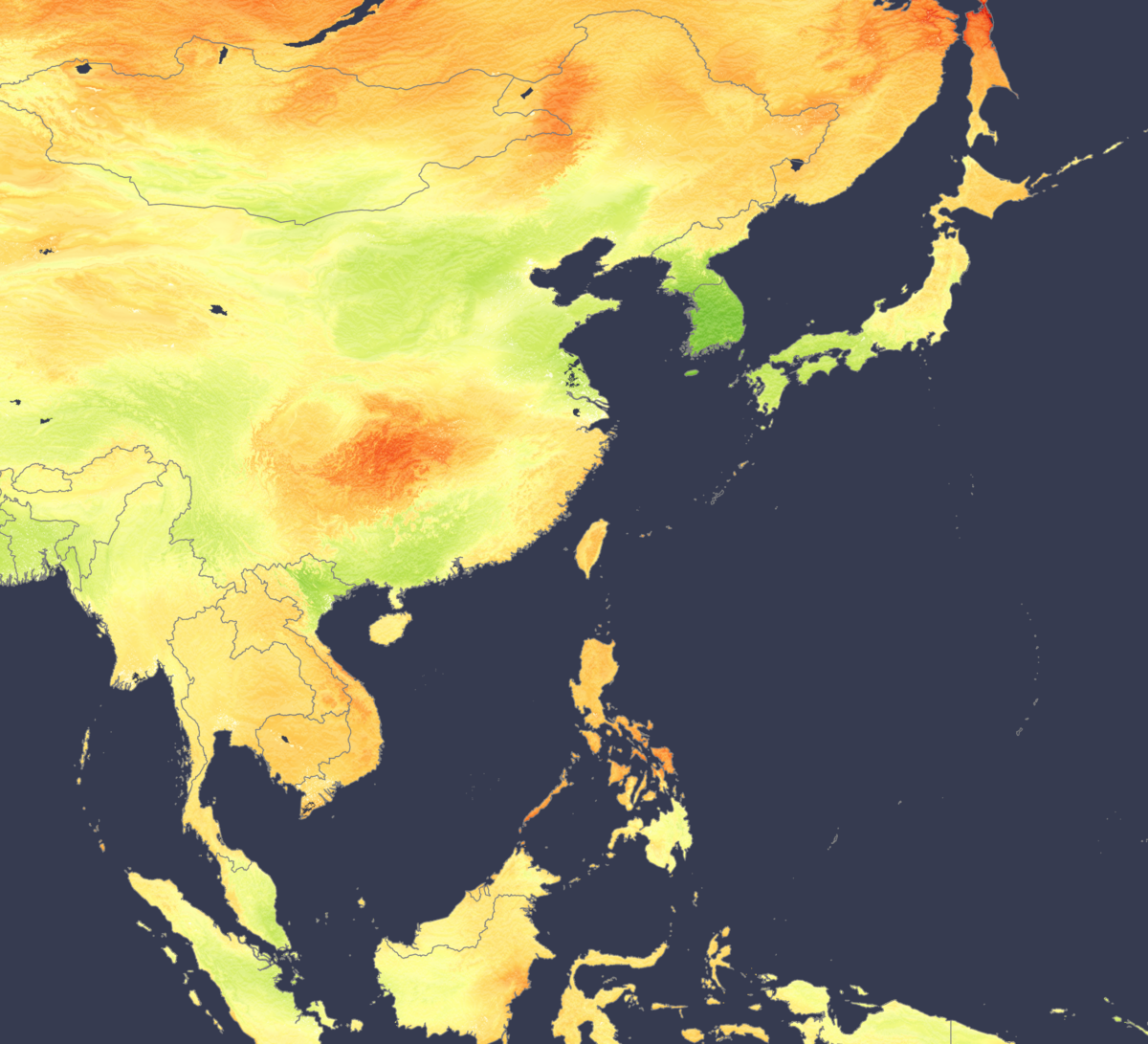While El Nino typically delivers warmer than average temperatures to Northern Asia, analysis from the Solcast API of conditions from December to February this year shows some winners and losers. In the north, a cloudy Lunar New Year impacted February irradiance and brought down the season average. Solar producers in several provinces of Central China, will have benefited from clearer than normal conditions in December and particularly February, bringing up the average to 20% more than expected. In the tropics strong thunderstorm activity occasionally broke through typically drier El Nino conditions, delivering regional variation, despite generally higher irradiance than normal in Thailand, Vietnam, the Philippines and Southern Indonesia.

China saw large variances across the continent, with almost every region seeing less than average irradiance, other than Guizhou, Hunan, Hubei and Chongqing provinces which saw up to 20% more irradiance than normal. Several northern regions were seeing clear conditions, through December and January, until a winter weather outbreak around Lunar New Year in February dropped irradiance significantly, up to 20% below normal for February, and consequently up to 10% below normal for winter. Whilst on average, China saw slightly warmer temperatures than normal, this was accompanied by large variations. On Feb 18, -52.3 C was recorded in Xinjiang province while Badu in the south of China reached 38°C. The same weather that drove these variations interrupted the typical El Nino patterns.

Korea and Southern Japan saw consistently cloudier conditions than in normal years, decreasing irradiance and solar potential across the region. Despite being slightly warmer than average, several cold fronts brought outbreaks of cold arctic air, and associated cloudy and snowy weather events. Irradiance across South Korea was 15% below average for the whole winter period, and 30% below average in February. Solar potential in southern Japan was 5-10% below average for the season, also driven by a cloudy February, though Northern Japan was above average for most of the season.

South East Asia saw above average irradiance, consistent with typical El Nino patterns, but January was a cloudy month. The remainder of the tropics saw mostly average conditions for the season, though month-to-month conditions were dominated by typical tropical variability. Irradiance over Thailand was about 5% above average in most areas, driven by clear conditions in December and February which saw up to 10% more irradiance than normal. Typical El Nino conditions in the tropics see drier than usual conditions, more like what was seen in Vietnam this year.
The current El Nino event is coming to an end, and its drying influence over tropical parts of Asia was masked by periods of more active tropical thunderstorm activity.
Solcast produces these figures by tracking clouds and aerosols at 1-2km resolution globally, using satellite data and proprietary AI/ML algorithms. This data is used to drive irradiance models, enabling Solcast to calculate irradiance at high resolution, with typical bias of less than 2%, and also cloud-tracking forecasts. This data is used by more than 300 companies managing over 150GW of solar assets globally.
The views and opinions expressed in this article are the author’s own, and do not necessarily reflect those held by pv magazine.
This content is protected by copyright and may not be reused. If you want to cooperate with us and would like to reuse some of our content, please contact: editors@pv-magazine.com.



By submitting this form you agree to pv magazine using your data for the purposes of publishing your comment.
Your personal data will only be disclosed or otherwise transmitted to third parties for the purposes of spam filtering or if this is necessary for technical maintenance of the website. Any other transfer to third parties will not take place unless this is justified on the basis of applicable data protection regulations or if pv magazine is legally obliged to do so.
You may revoke this consent at any time with effect for the future, in which case your personal data will be deleted immediately. Otherwise, your data will be deleted if pv magazine has processed your request or the purpose of data storage is fulfilled.
Further information on data privacy can be found in our Data Protection Policy.